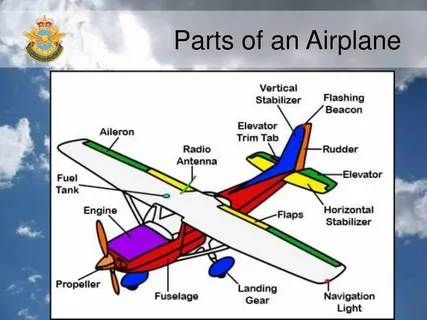Aircraft flaps are crucial aerodynamic devices that play a significant role in the performance and safety of an aircraft during various phases of flight. Understanding their functions and importance is essential for pilots, aviation enthusiasts, and anyone interested in the mechanics of flight.
- What Are Aircraft Flaps? Aircraft flaps are movable surfaces mounted on the trailing edge of the wings. They can be extended or retracted during flight to modify the wing’s shape and enhance aerodynamic properties.
- Functions of Aircraft Flaps 2.1. Lift Augmentation: One of the primary functions of flaps is to increase the lift generated by the wings, particularly during takeoff and landing. By increasing the wing’s surface area, flaps allow the aircraft to achieve the necessary lift at lower speeds, facilitating safer takeoffs and landings.
- Aircraft flaps are hinged surfaces on the trailing edges of wings, playing a crucial role in flight dynamics. Their primary function is to increase lift during takeoff and landing, allowing aircraft to operate at lower speeds. By extending flaps, the wing’s surface area and camber are increased, generating more lift. This is vital during takeoff, where a shorter runway is needed, and during landing, ensuring a safer, slower descent.
Flaps also augment drag, which is beneficial for controlling speed, particularly when descending towards an airport. Different flap settings, typically controlled by the pilot, cater to various flight phases, optimizing performance and safety. Modern aircraft use complex flap systems, including slotted, Fowler, and Krueger flaps, each offering distinct aerodynamic advantages. In essence, flaps enhance an aircraft’s versatility, efficiency, and safety, making them indispensable in aviation operations.
2.2. Drag Control: Flaps also play a role in controlling the aircraft’s drag. During certain flight phases, such as landing approach or steep descents, deploying flaps increases drag, helping the aircraft to reduce speed without excessively increasing pitch or descent angle.
2.3. Pitch Control: In addition to lift and drag adjustments, flaps can affect the aircraft’s pitch. Depending on their design and deployment angle, flaps can alter the aircraft’s pitch attitude, aiding in maintaining stability and control during different flight maneuvers.
- Types of Aircraft Flaps 3.1. Plain Flaps: These are simple flaps that hinge down from the wing, increasing both lift and drag.
3.2. Split Flaps: Split flaps extend downward and backward from the lower surface of the wing, primarily increasing drag with minimal lift augmentation.
3.3. Fowler Flaps: Fowler flaps extend backward and downward, significantly increasing wing area and lift while moderating drag increase.
3.4. Slotted Flaps: Slotted flaps feature a gap between the flap and the wing, improving airflow and lift characteristics, especially at high angles of attack.
- Importance in Aviation 4.1. Safety Enhancement: Flaps contribute significantly to aircraft safety by allowing pilots to operate at lower speeds during critical phases like takeoff and landing, reducing the risk of stalling.
4.2. Performance Optimization: Flaps optimize aircraft performance by enabling shorter takeoff and landing distances, improving climb rates, and enhancing overall maneuverability.
4.3. Operational Flexibility: The ability to adjust flap settings provides pilots with flexibility in adapting to varying flight conditions, runway lengths, and operational requirements.
- Flap Deployment and Operation 5.1. Takeoff Flap Settings: During takeoff, pilots typically set flaps to a specified angle to maximize lift and reduce ground roll, allowing the aircraft to achieve liftoff at lower speeds.
5.2. Landing Flap Settings: For landing, flaps are often extended to a greater angle to increase lift and drag, enabling a controlled descent and touchdown at slower speeds.
- Conclusion Understanding aircraft flaps is essential for pilots and aviation enthusiasts to grasp the intricacies of flight dynamics and safety measures. Their multifunctional roles in lift augmentation, drag control, and pitch adjustments underscore their importance in enhancing aircraft performance and operational safety throughout various flight phases.




